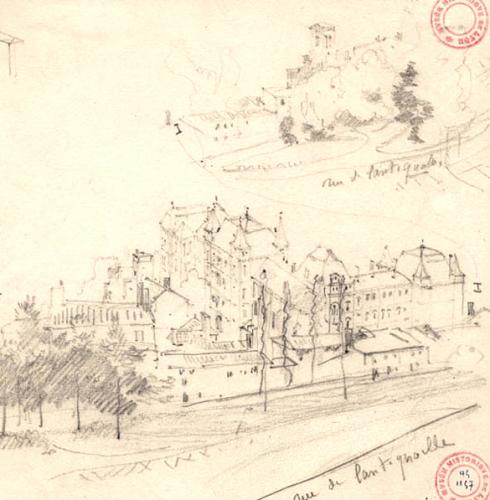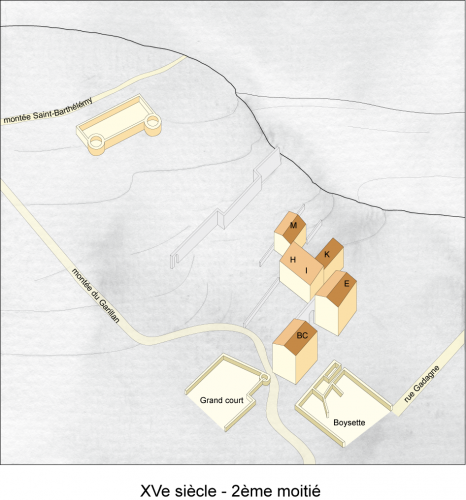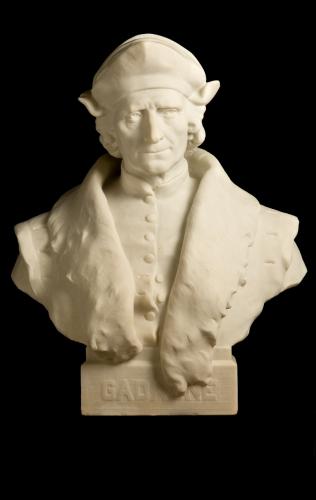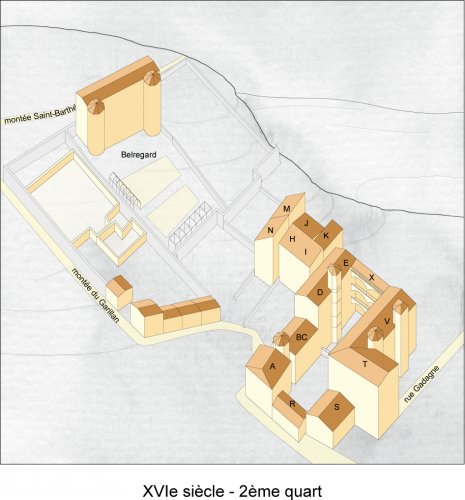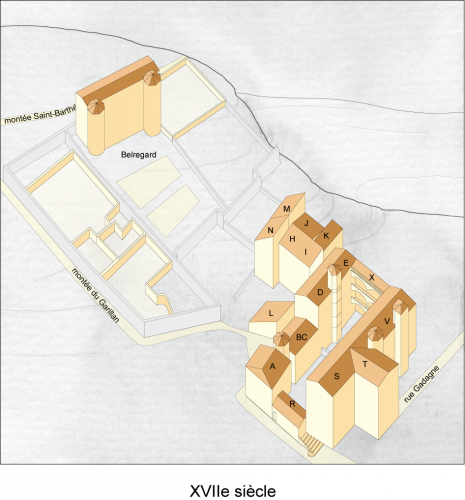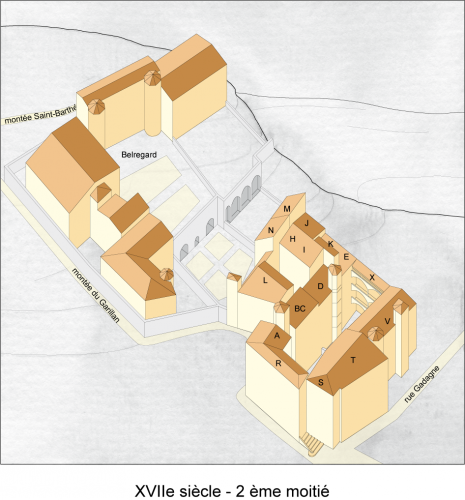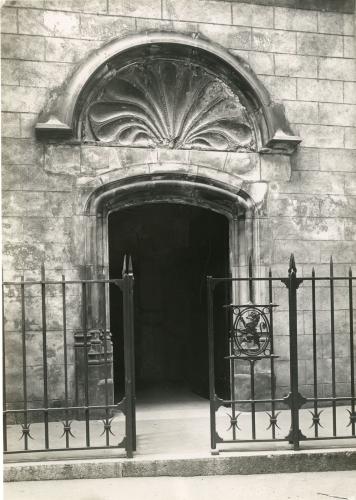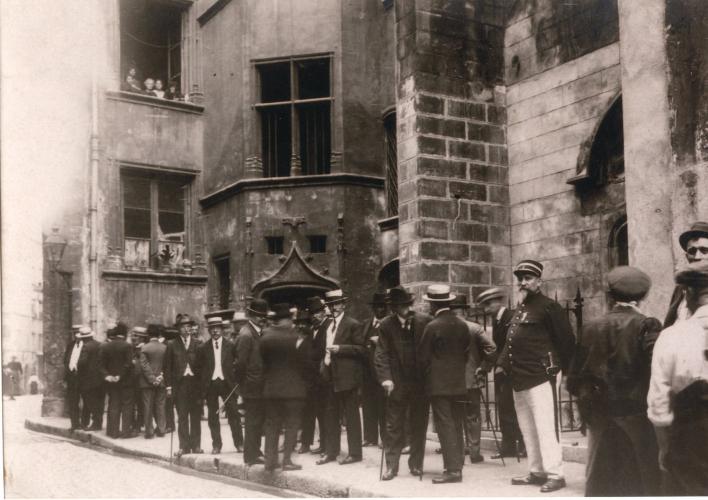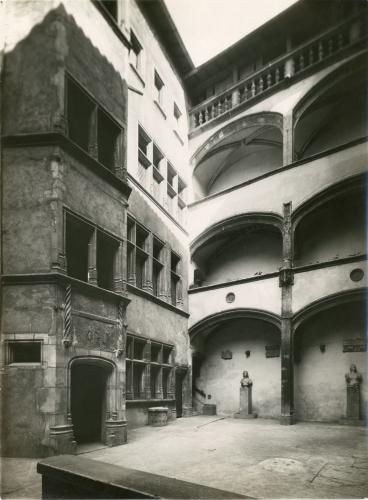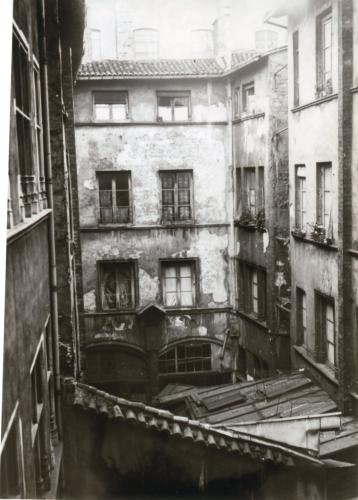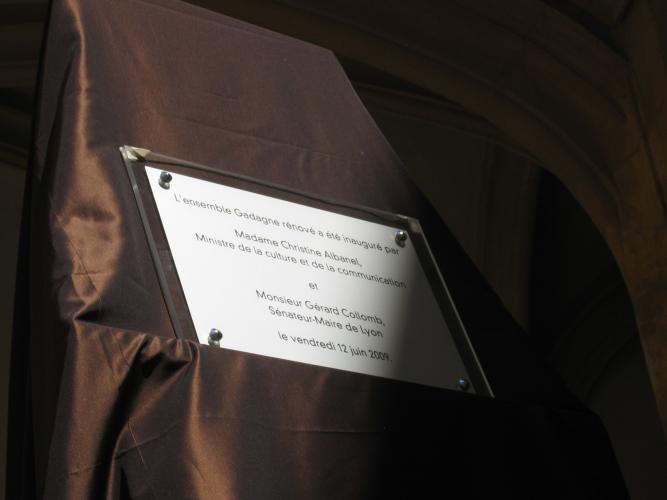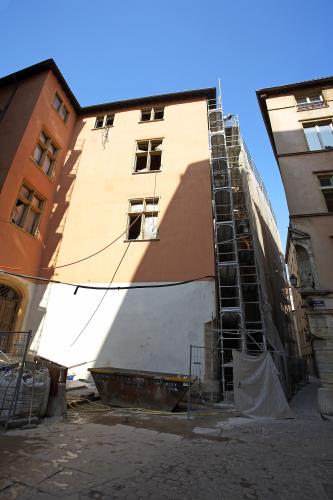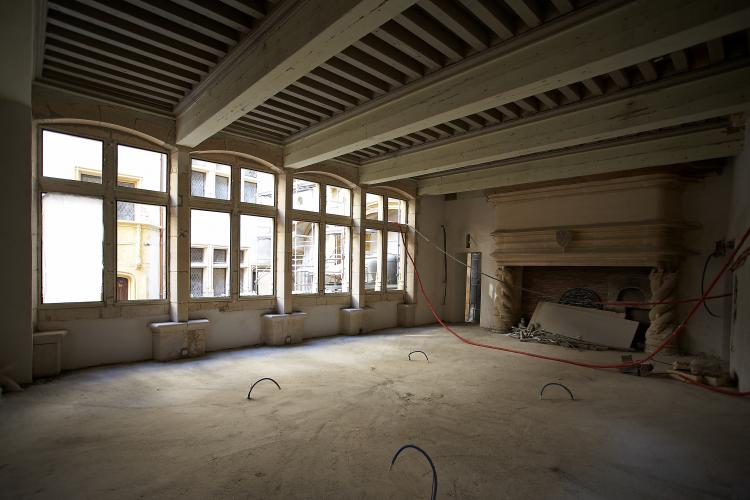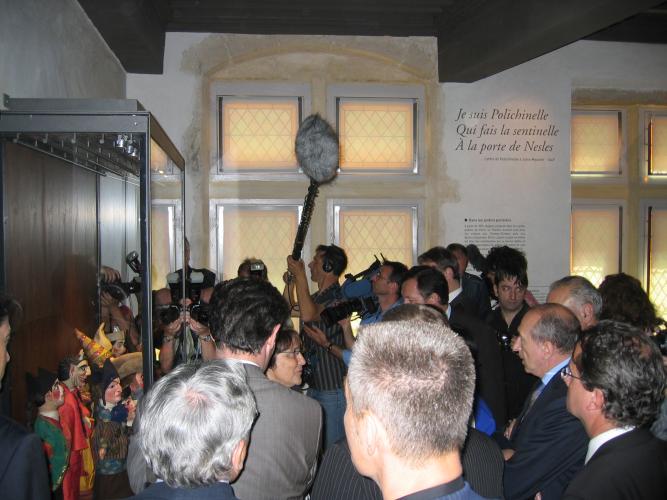History of Gadagne
Antiquity
76 av. B.C.The history of the Gadagne site dates from the early 1st century B.C. (- 76 B.C.) even before the founding of Lugdunum by the Romans. It is the first confirmed tracing of pre-colonial settlement in this sector on the right bank of the Saône.
The presence of craftsmen plus the construction of a warehouse at the beginning of the 1st century of our era bear witness to the district’s commercial vocation.
During the 3rd century, important refurbishment works lead to a complete reorganisation of the building.
This expansion may correspond to the development in the transportation of merchandise on the Saône and the probable existence of an unloading bay close by.
The warehouse was consequently transformed, either in full or in part, into dwellings. This final occupation phase drew to a close with the creation of a hypocaust – an ancient Roman underground heating system.
The site was abandoned in the early part of the 5th century. It served as a rubbish dump before suddenly being buried beneath the rubble of a landslide.
14th century
Around 1350The Gadagne site was reborn in the Middle Ages, in the 14th century to be precise, with the construction of the House of Boysette alongside rue Saint-Jean.
During excavations in the major courtyard, the discovery of an ice room hollowed out from a depth of 4.30 metres, put this dwelling on the prestige properties’ list. In fact, at the time, the use of ice rooms was often associated with a high economic and social context (castles and abbeys). It should be noted that this was a rather incredible discovery for the Lyon region.
The house developed rapidly over the century, above all, the ice room was condemned and converted into a cesspool. The outbuildings gradually gained ground and were transformed into dwellings during the 15th century.
15th century
Around 1450Between 1489 and 1492, a family of rich Italian merchants, the Pierrevive family, bought the plot of land on which the current museum is located.
The Pierrevives, who originated from Piedmont, settled in Lyon around 1470. Four brothers purchased the property : Jean-Michel, senior physician to King Charles VIII, Amédée, a pharmacist, rich spice merchant and recipient of royal estates, and their two brothers, André and Nicolas.
They embarked on a major reconstruction project : The House of Boysette was destroyed and a new, smaller house was erected along rue Gadagne.
The Pierrevive family built premises from where they operated their banking and commercial activities. Along Saint-Barthélemy climb, they constructed a luxury townhouse called the Belregard.
16th century
Around 1550From the mid 16th century onwards, the block was divided into two separate plots, which developed in different ways. In 1545, the Gadagnes, incredibly rich Florentine bankers, purchased the northern plot from the Pierrevive family.
Thomas and Guillaume de Gadagne therefore became the owners of the northern part (10-12 rue Gadagne). They could not, however, move into the premises straightaway due to a notarial deed stipulating a short-team lease up until 1548.
They resold the property in 1581, and therefore only occupied the premises for a few decades or so. Nevertheless, their pomp and power left an indelible mark on Lyon and their name has gone down in history.
From 1648 onwards, a report compiled by the master masons and carpenters of the town referred, for the first time, to the house called Gadaigne. Several years later, “Rue Pierre-vive” mentioned on the scenographic plan became “rue des Gadagne”.
17th century
Around 1650In 1654, André Falconet, physician and alderman of the City of Lyon, purchased the plots of current No. 10 and No. 12 rue Gadagne.
To construct a dwelling place fitting his social status, André Falconet embarked on a major project of transformation.
He raised the building by one floor and created a loft over the west and southern wings of the major courtyard, and created six new rooms. Their mullion windows crossed with sharp crests and no beading bear testimony to this particular era.
He also built the new main structure of a building against the existing walls along Garillan climb. He also created a small, terraced, ornamental garden to the west.
In the late 17th century, the buildings of the current museum, as we know them today, were completed.
18th and 19th centuries
Around 1750 - 1850The building remained intact in the 18th century but was divided into numerous small apartments during the 19th century. Around 1898, the Commission archéologique du Vieux-Lyon (Archeological Commission of Vieux-Lyon) referred to all of these buildings as remarkable structures.
Renting increased during the 19th century. The big merchant families had long since left the district and, for a whole century, it had been one of the town’s poorest areas.
The building changed the status. Almost sixty families went to live there : windows were walled up and groups of huts set up…. The large rooms were divided into small dwellings with attic roomsinvolving the creation of new corridors, new doors and mezzanine floors.
The dwellings were fitted with sinks, heating systems and pipes to drain away waste water.
These changes barely affected the architectural structure of the building. Most of them were removed during the first refurbishment works carried out on the museum in the early part of the 20th century.
Some remarkable murals nevertheless remain from this period. Financed by a group of hunters, they have nowadays been restored and are on display in the International Puppet Museum.
20th century
Around 1950Between 1902 and 1941, the Town of LYON gradually purchased the site.
On 5 October 1920, the buildings located at No. 10. No. 12 and No. 14 rue de Gadagne were listed as Historic building.
On 2 July 1921, the Lyon History Museum opened its first 3 exhibition rooms. It exhibited the collections previously displayed at the Town Hall.
En 1946, Georges-Henri Rivière, Curator of the musée des Arts et Traditions populaires de Paris (Paris Museum of Popular Arts and Traditions) unveiled a project to create themed museums in provincial France. Guignol, a symbolic character of international acclaim led to the puppet musem being housed within the History Museum in Lyon. The museum opened its doors in 1950.
In 1998, vast refurbishment and renovation works were launched on the entire Gadagne site.
21th century
Around 2000Following excavation, work started in 2001 and in July 2003, the museum closed to the public.
The new temporary exhibition rooms were inaugurated in 2007 with the Lyon 1800-1914 Exhibition : Change the town, conquer the world…
Ten years after building works started, the Gadagne site reopened to the public in June 2009. Magnificently restored, extended and revamped in line with current standards, visitors can now clearly see the two major collections sheltered under its roof : the Lyon History Museum and the International Puppet Museum.
The site is further enhanced by terraced gardens, a small theatre, a coffee and a shop.

